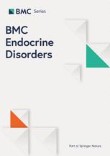The socio-economic inequality in body mass index: a PERSIAN cohort-based cross-sectional study on 20,000 Iranian adults
Authors
Affiliations
Abstract
Introduction: The aim of the present study was to explore and determine the association between BMI and socio-economic factors in Iran.
Methods: Adults aged 35 to 70 (n = 20,460) were included from Ardabil Non-Communicable Disease (ArNCD) cohort study. BMI was calculated as kg/m2. Principal Component Analysis (PCA) was used to determine the socio-economic quintiles. Multivariate linear regression was performed to analyze the association of BMI as dependent variable with explanatory variables, Additionally, decomposition analyzing conducted to identify factors that explained wealth-related inequality in obesity.
Results: The prevalence of overweight and obese people was 83.7% (41.4% overweight and 42.5% obese) wherein the highest frequency of obese people belonged to the age group of 45 to 49 years old (19.9%) and to the illiterate people (33.1%). The results of multivariate linear regression model showed that age, being female, marriage, lower education level, having chronic disease, alcohol use, and higher socioeconomic level positively associated with obesity. The results of the decomposition model showed that the most important variables affecting socioeconomic inequality in higher BMI level were socioeconomic status (75.8%), being women (5.6%), education level (- 4.1%), and having chronic disease (2.4%).
Conclusion: BMI showed significant association with socio-economic status, where richest people had significantly higher BMI than poorest group. Considering the direct role of high BMI in non-communicable diseases, new policies are needed to be developed and implemented by means of diet intervention and increased physical activity to control the BMI in the population of Iran.
Keywords: Body mass index (BMI); Decomposing; Inequality; Obesity; Socio-economic status (SES).

